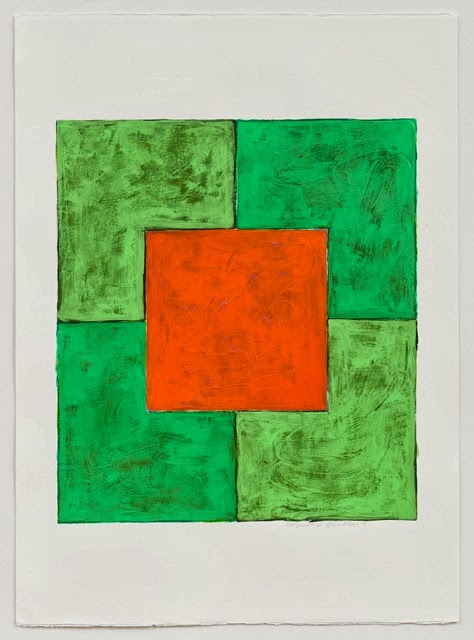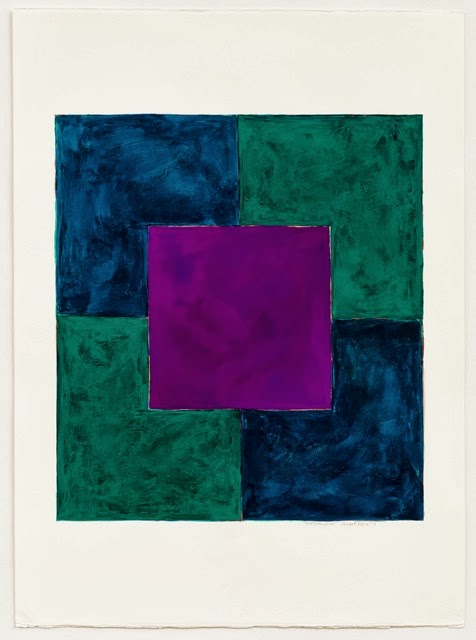VioletsRed, 2013
Acrylic Paint on Bent Aluminum Panel
56 x 48 x 3/8 inches
Acrylic Paint on Bent Aluminum Panel
56 x 48 x 3/8 inches
What are you working on in your studio right now?
I am constantly engaged in the creation and production of new paintings. As each work signals the path to the next, my inspiration and energy never wanes. Color combinations most often appear in dreams, and I keep a pad and pencil by the bed. The colors generally present themselves in my mind’s eye with tremendous clarity and force – waking me from sleep.
Can you describe your working routine?
I’m very fortunate to have my studio space at home. My regular routine is to awaken, make a cup of coffee and go directly into the studio. Not having to travel makes this transition extremely easy. I like to take care of email and correspondence in the morning. By late morning, I’m in my coveralls and am painting. I generally don’t break until late afternoon. I’m back in the studio painting before 6PM. I can usually get in a couple of hours before stopping to prepare and eat dinner. Many nights I go back to work and will paint straight thru until the morning. I do not find that I am happy away from my work and do not often go far from my studio. I do try to make time to attend exhibitions and openings that have significance to me, but once I am immersed in a piece, everything else falls by the wayside.
Can you describe your studio space and how, if at all, that affects your work?
My studio space is a 500 square foot room with northern skylights and soaring ceilings – 16’ high. It’s a beautiful and well lighted space and I’ve been very happy painting here for the last 20 years. Having a comfortable accessible studio space makes my work process very easy. All I have to do is walk through an interior door from my home and I am at work. For me this has been a vital part of my professional development. I’ve had a large studio attached to my residence since 1974. I know that many artists prefer to have their workspace in another location. For me having 24/7 access without travel significantly impacts my productivity and capability to explore any and all ideas: sheer bliss.
Tell me about your process, where things begin, how they evolve etc.
I approach each painting as though I have never painted this image before, allowing the works to evolve organically. The only set parameters are those surrounding preparation. Each panel must be degreased, sanded rough, cleaned and have a bonder applied so that my acrylic paints will adhere to the surface. Then I apply a layer of white acrylic gesso. Every work has a grid drawn onto the surface. Laying in the texture is physically challenging. I like to put down each quadrant during one session – this gives the overall texture of that portion a cohesive conforming surface. Each time I leave the studio and return, there is a slight difference, as my hand adjusts to the pressure of the process. This thick surface needs to dry hard before I can begin the next portion of the painting, which is where my heart and soul really take over and I feel like I am painting. Often during this drying time, I will create color studies on paper, tyvec or any other flat surface I have at hand. I find that this keeps my senses heightened to various color relationships and textures. There is an ebb and flow that each painting generates, and I follow its lead. The works all address my interests in language, texture, color and geometry. The juxtaposition between thin and thick, for whatever reason, is particularly attractive to me. My most recent works are densely textured while maintaining a thin profile – usually 1/8” thick. I also have been trying to maintain sizes of works using a 10:9 ratio as my gauge. I enjoy the play of the painting when it is slightly off square, with square either at dead center or slightly off, anchoring the entire
image.
From top: YellowsLightBUSquare, GreensOrange, DeepGreensViolet
All are acrylic paints and pastes on 300# Cold Press Fabriano Paper 30 x 22 inches.
All are acrylic paints and pastes on 300# Cold Press Fabriano Paper 30 x 22 inches.
All photos of works on paper are Photo Credit: D.James Dee
What are you having the most trouble resolving?
A quest for resilient responsive brushes that don’t wear out from the application of paint onto the hard and unforgiving surfaces is ongoing. While painting the negative spaces, I use very small brushes (0,1,2). I buy them by the dozens, and never seem to have enough on hand. Additionally I am working with a designer to create strainers that can maintain an ultra thin profile and be lightweight. I enjoy experimenting with various paints and materials, always looking for new ways to express light and texture. As the evolution of my work dictates improvisation, there are often “mistakes”. These mistakes generally lead to new and exciting changes in the work. Golden has a terrific tech department and I am constantly receiving new materials to explore. I think that it is very important for artists to find ways in which to move out of their own comfort zones to keep their work fluidly moving forward. The consistent daily time in the studio feeds this type of creative process. Although I am indeed the painter, the works have a life of their own – I’m just following their cues. I anticipate that the work will continue to inspire and surprise me while maintaining its integral tie to past abstraction and adding to the current dialog.











I really enjoyed reading about your feelings about being able to walk from your home to your studio and always knowing that your work is just a few steps away. I appreciate your explanations of the process and feel like I understand the "tiniest bit" of what you do and how you do it.
ReplyDelete